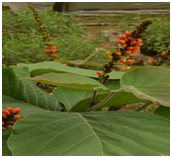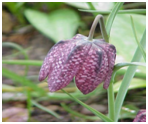

10th December 2022 (7 Topics)
Context
In a recent assessment, three medicinal plant species found in the Himalayas have been added to the IUCN ‘Red List’ of Threatened Species, providing them conservation status.
About
About the species:
- Species listed:
- Meizotropispellita as ‘critically endangered,
- Fritilloriacirrhosa as ‘vulnerable’
- Dactylorhizahatagireaas ‘endangered’.
- Found in: the Himalayan region spread across Nepal, India, China, Sikkim, Afghanistan, and Pakistan.
- Threats: Deforestation, habitat loss, forest fires, illegal trade, and climate change.
Significance of the species:
- Meizotropispellita, commonly known as ‘Patwa’, is a perennial shrub with a restricted distribution that is endemic to Uttarakhand.
- The species is listed as ‘critically endangered’ based on its limited area of occupancy (less than 10 sq. km).
- The essential oil extracted from the leaves of the species possesses strong antioxidants and can be a promising natural substitute for synthetic antioxidants in pharmaceutical industries.

- Fritillariacirrhosa(Himalayan fritillary), used for the treatment of bronchial disorders and pneumonia. The plant is also a strong cough suppressant and a source of expectorant drugs in traditional Chinese medicine.

- Dactylorhizahatagirea(Salampanja), is extensively used in Ayurveda, Siddha, Unani, and other alternative systems of medicine to cure dysentery, gastritis, chronic fever, cough, and stomach aches.
- It is a perennial tuberous species endemic to the Hindu Kush and Himalayan ranges of Afghanistan, Bhutan, China, India, Nepal, and Pakistan.

- It is a perennial tuberous species endemic to the Hindu Kush and Himalayan ranges of Afghanistan, Bhutan, China, India, Nepal, and Pakistan.
The International Union for Conservation of Nature (IUCN) Status:
- IUCN is an international organization (NGO) working in the field of nature conservation and sustainable use of natural resources.
- It is involved in data gathering and analysis, research, field projects, advocacy, lobbying, and education. The organization is best known for compiling and publishing the IUCN Red List, which assesses the conservation status of species worldwide. Its headquarters are in Gland, Switzerland.
- The IUCN Red List of Threatened Species, founded in 1964, is the world’s most comprehensive inventory of the global conservation status of biological species.
- When discussing the IUCN Red List, the official term “threatened” is a grouping of three categories: Critically Endangered, Endangered, and Vulnerable.
|
The following categories have been classified in this list:
- Extinct (EX)-No known individuals remaining.
- Extinct in the wild (EW)-Known only to survive in captivity, or as a naturalized population outside its historic range.
- Critically Endangered (CR)-Extremely high risk of extinction in the wild.
- reduction in a population (greater than 90% over the last 10 years),
- population size (a number less than 50 mature individuals),
- quantitative analysis showing the probability of extinction in wild in at least 50% in their 10 years, and
- It is therefore considered to be facing an extremely high risk of extinction in the wild.
- Endangered (EN)High risk of extinction in the wild.
- Vulnerable (VU) -High risk of endangerment in the wild.
- Near Threatened (NT)-Likely to become endangered in the near future.
- Least concern (LC)Lowest risk. Does not qualify for a more at-risk category. Widespread and abundant taxa are included in this category.
- Data Deficient (DD) - Not enough data to assess its risk of extinction.
- Not evaluated (NE) - Has not yet been evaluated against the criteria.
More Articles


